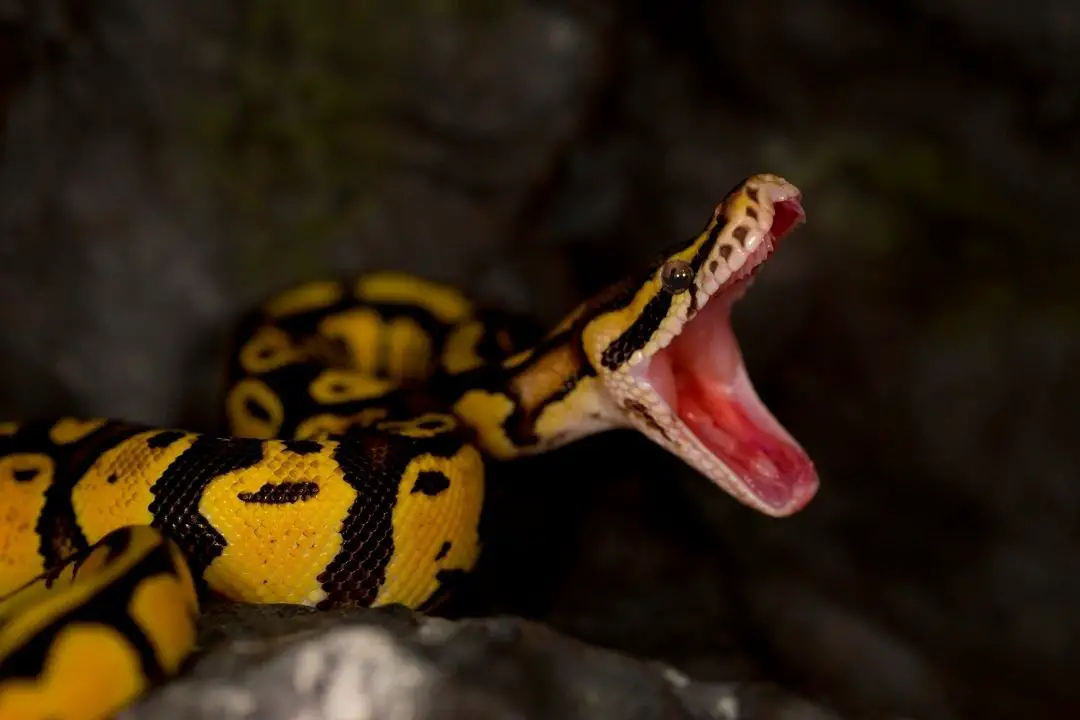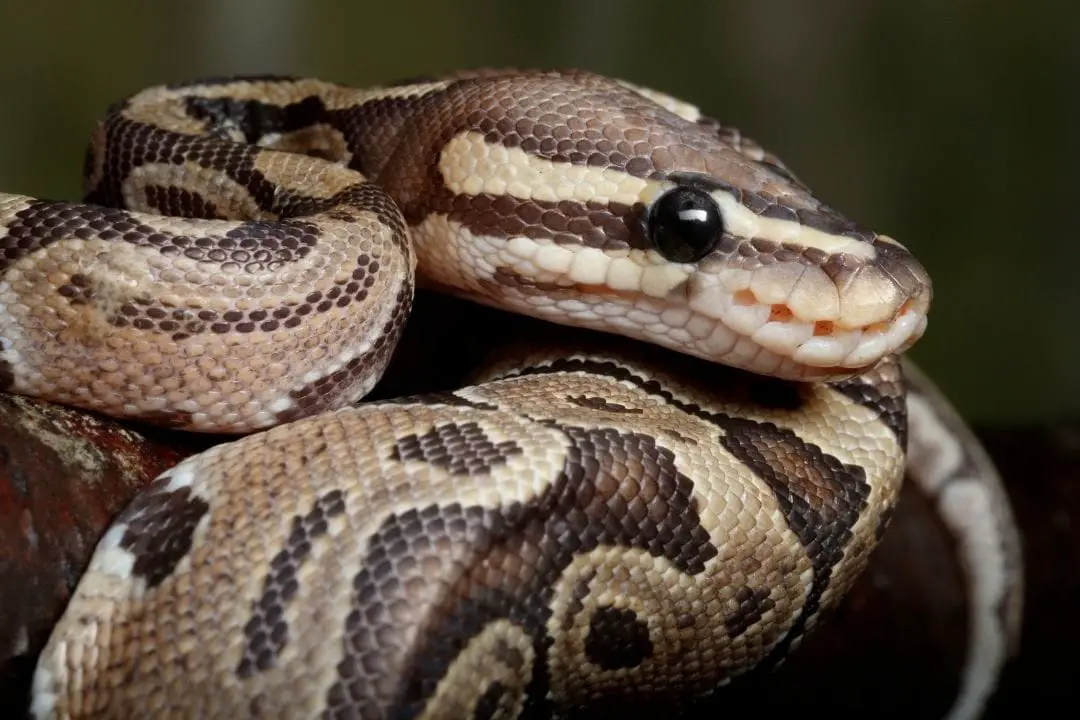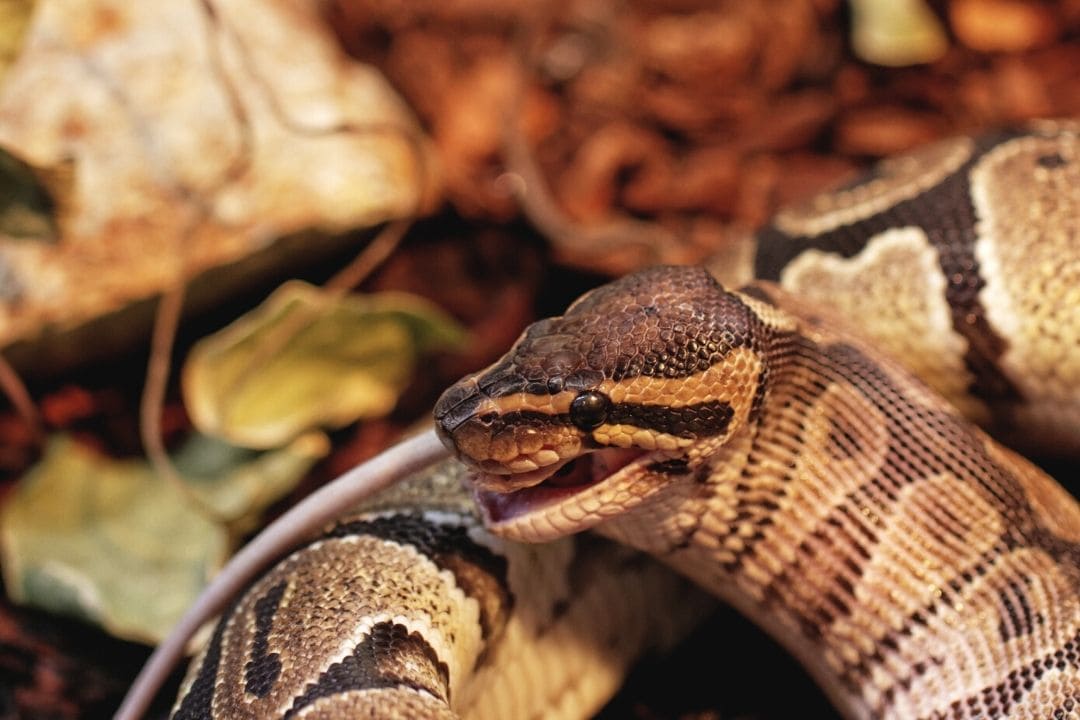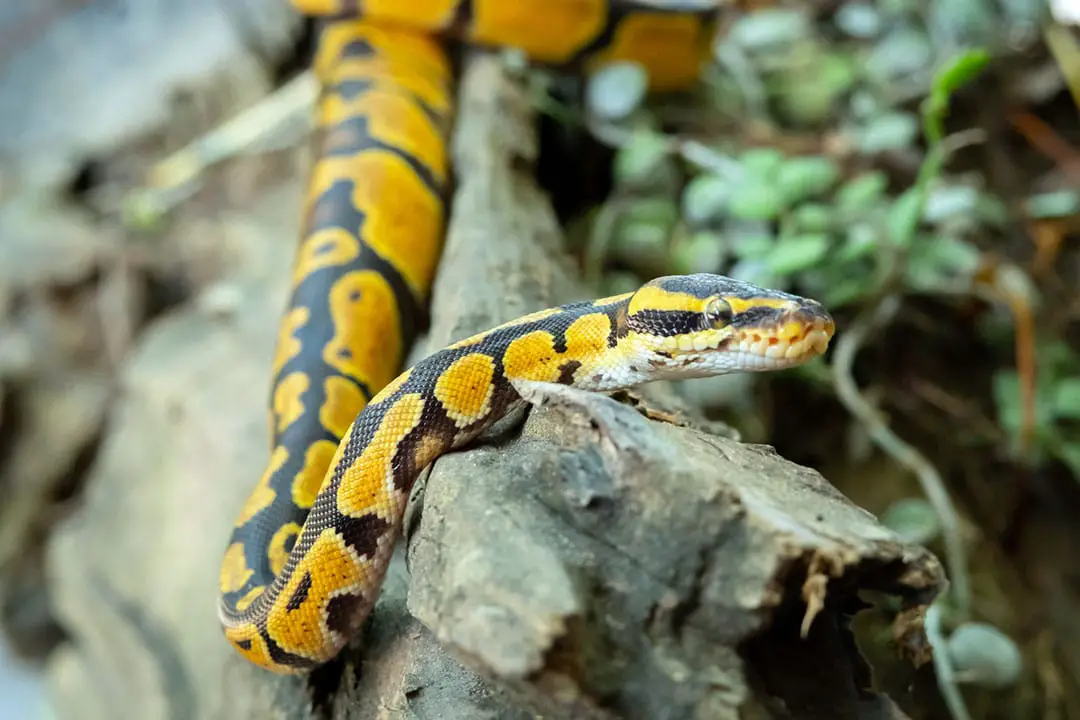The ball or royal python (Python regius) is one of the most common pet snakes. They are frequently recommended as a good snake for a beginner reptile keeper.
Some pythons are famously dangerous and are the frequent target of bans. You may be wondering:
Are Ball Pythons Dangerous?
As a whole, ball pythons are not dangerous to humans. They are shy animals that are too small to cause serious harm.
What Makes a Snake Dangerous
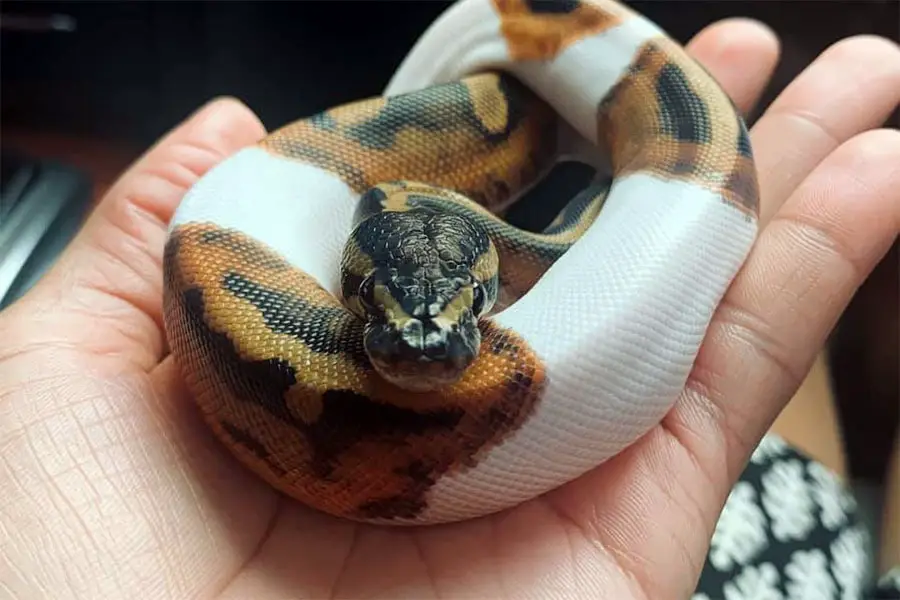
There are a number of factors that go into determining how dangerous a snake is. The first consideration is venom. Many snakes use venom to take down prey.
Not all venomous snakes are dangerous to humans, but some can kill an adult very easily. The snake’s size is another factor. Smaller snakes tend to have trouble harming humans.
Venom can level the playing field, but for constrictors or snakes with mild venom, size is a big factor. They need to be large enough to potentially view a human as a meal and strong enough to pose a threat from constriction.
The behavior of the snake is another factor.
Some snakes are more willing to fight back if they feel threatened. They may also resort to bites more frequently than other species.
Venomous or very large snakes that fight back are the most dangerous to humans.
Ball Pythons
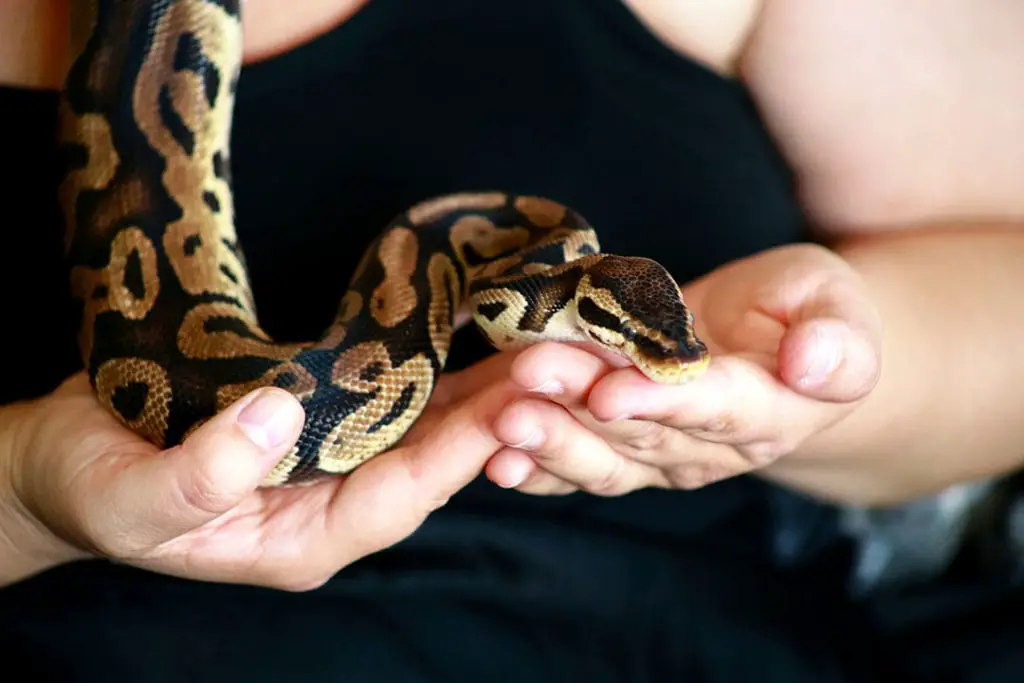
Everything you need to know about caring for Ball Pythons in captivity:
Read our Ball Python Care Sheet (Complete Setup & Guide)
With these factors in mind, let’s examine the ball python.
First, ball pythons lack venom. They kill prey via constriction. Constriction kills prey by cutting off the flow of blood in the prey animal, leading to rapid loss of consciousness and death.
Theoretically, a ball python could harm you if it constructed your neck, but that leads into another point. Ball pythons are too small to cause much damage.
Even very large females rarely exceed 6 feet. While this sounds large, it makes ball pythons medium snakes or slightly on the small size.
Most constrictors that could take out a human are over 13 feet long as adults and can weigh as much as a grown man.
Ball pythons are much smaller and lighter. They just don’t have the strength to cause serious injuries from constriction.
Ball pythons eat rats and prey of a similar size. The dangerous snakes frequently eat deer. Ball pythons are named for their defensive behavior.
A ball python that feels threatened will ball up and hide its head in the mass of its body. They may bite if pressed, but ball pythons prefer to flee or ball up over confronting humans.
All of this means that ball pythons just can’t do much to humans. Even babies are far larger than any prey item a ball python would be interested in.
Most injuries by ball pythons are minor and equivalent to a cat scratch or bee sting.
Danger to Animals

Ball pythons prefer birds and small mammals as prey. They will typically target smaller creatures that are not much wider than the widest part of the snake.
This means that only the smallest dogs are at risk. Small puppies or kittens could be at risk if they were exposed to a loose snake. It is best to keep pets apart.
Most common pets could easily take out a ball python. A ball python is likely to eat any small birds or rodents in a home. Make sure your snake has a secure enclosure so you do not risk an escape for a snack.
Environmental Risk
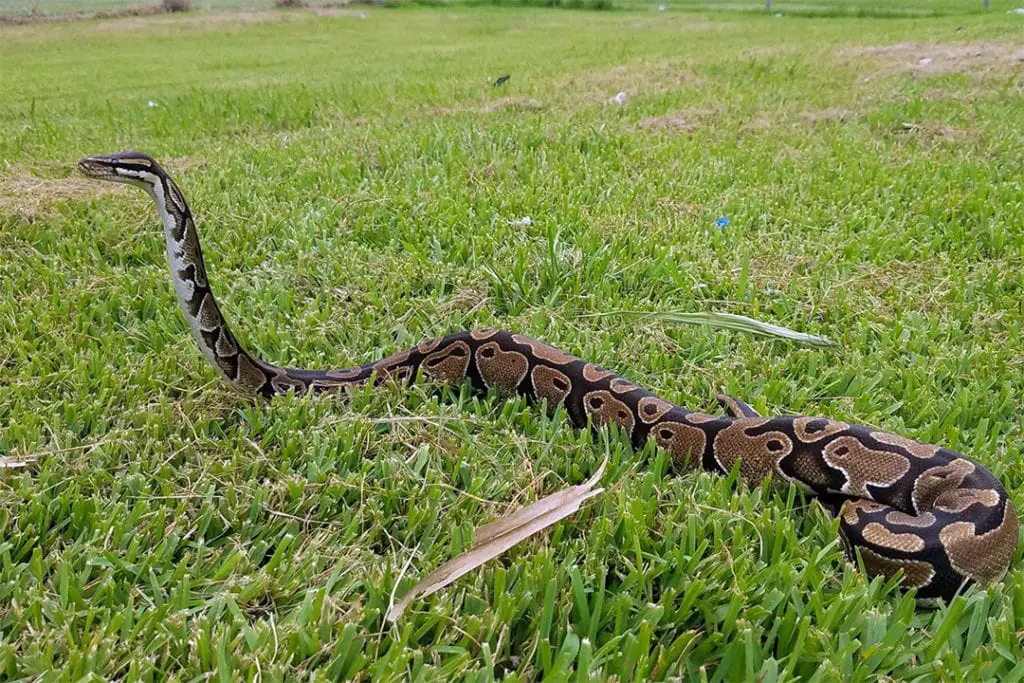
The one area a ball python could be a risk is if the snake escapes outside. In most climates, ball pythons would not last a whole winter. However, in areas with mild winters there is a risk that escaped or released snakes could form a breeding population.
This has happened in Florida with Burmese pythons that were released into the wild or escaped.
These snakes have established breeding populations in the wild and have become threats to native species. Since they have few natural predators in their introduced range, there is little to stop the population from exploding.
They also can push out native animals from their normal ecological niche by eating their prey or taking up breeding and resting sites.
This could happen with ball pythons. They have a wide range of temperatures and humidity levels that they can withstand. They also breed well if given a chance.
Many examples of legislation banning ball pythons either lumps them in with the larger pythons or is from an area where they could establish a breeding population.
It is unknown if any native predators would be able to keep their population under control. However, this has not yet happened.
However, ball pythons do lack several factors that would make them an invasive species. The first is that they never get large enough to avoid predation via sheer size.
They are small snakes that are around the same size as many native species. This puts them at risk of the same predators as native snakes. They also do not reproduce as quickly.
They tend to lay smaller clutches than other snakes. They tend to have 1-11 eggs in a single clutch. This means they can’t reproduce as quickly.
It also takes years for a ball python to reach breeding size. This means they can’t create a population of breeding adults quickly like some invasive animals.
Ball pythons also target small animals that reproduce quickly rather than larger animals. They are more likely to stay in areas with large rodent populations like near human dwellings. This mimics how they act in their native range.
Conclusion
Ball pythons are easy to care for and not likely to harm a human. They are just too small and docile for that to be a problem.
Wild ball pythons can easily be handled since they prefer to ball up than fight back.
They can be a threat to small animals, but overall they are not a threat. If you have any questions or comments, please leave them below.
